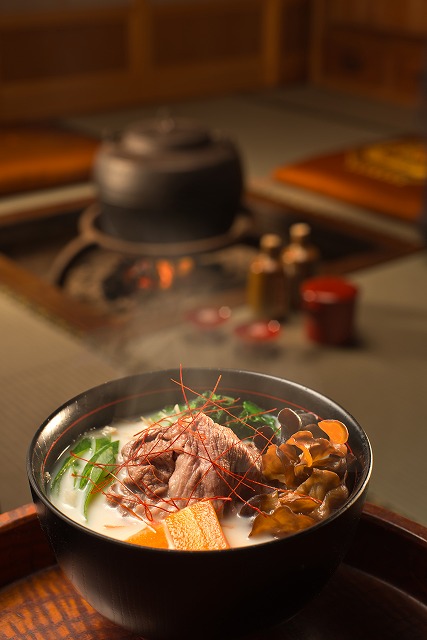最終更新日:2023年12月14日

Tofu and Shirakawa-go
Tofu has been an important part of the local cuisine in Shirakawa-go for centuries. In the past, its prevalence was largely due to availability. Soybeans could be grown in the area despite a scarcity of arable land, as farmers could plant the hardy crop on the ridges between their rice paddies. Religion, which in Shirakawa-go until relatively recently had a significant influence on what people ate, also helped establish tofu as a culinary mainstay.
Devout Buddhists often follow a vegetarian diet, in which tofu is a key source of protein. Traditionally, nearly all residents of Shirakawa-go belonged to the Jodo Shinshu (True Pure Land) school of Buddhism, which was introduced to the area in the thirteenth century and came to play an important role in village life. Strict vegetarianism was limited mainly to priests, but ordinary people partook of Buddhist cuisine on religious holidays. Among the most important of these for Jodo Shinshu devotees is the annual Ho’onko, which memorializes the school’s founder, Shinran (1173–1263).
In Shirakawa-go, the Ho’onko service is followed by a meal that includes several kinds of tofu. One exceptionally solid variety later came to be eaten grilled, which hardens it further, and is referred to as “ishiwari tofu” (stone-breaking tofu). Not quite as hard as the name suggests, the dish is available at many local restaurants, where it is usually served on an iron plate and eaten with soy sauce and katsuobushi (dried, fermented, and smoked fish flakes).

Suttate
Suttate soup is a Shirakawa-go specialty with origins in vegetarian Buddhist cuisine. A thick mixture of freshly ground soybeans and broth made with miso and soy sauce, the dish was originally served mainly on religious occasions associated with the Jodo Shinshu (True Pure Land) school of Buddhism, which has been the dominant faith in the area for centuries. The soup gradually became a part of everyday culinary culture, but remained unfamiliar beyond Shirakawa-go until recently.
Its popularity burgeoned after some enterprising local residents invented suttate nabe, a hot pot dish in which suttate is combined with ingredients such as mushrooms, long onions, and brand-name Hida beef raised in the area south of Shirakawa-go. Suttate nabe, which is creamy, aromatic, and has a mild taste somewhat similar to hot pot dishes cooked with soy milk, is available at select restaurants in and around the village of Ogimachi.
この英文解説は、2021年観光庁「地域観光資源の多言語解説整備支援事業」により整備しています。
This English description is provided by the "Multilingual Commentary Project 2020" of Japan Tourism Agency.

Back Home